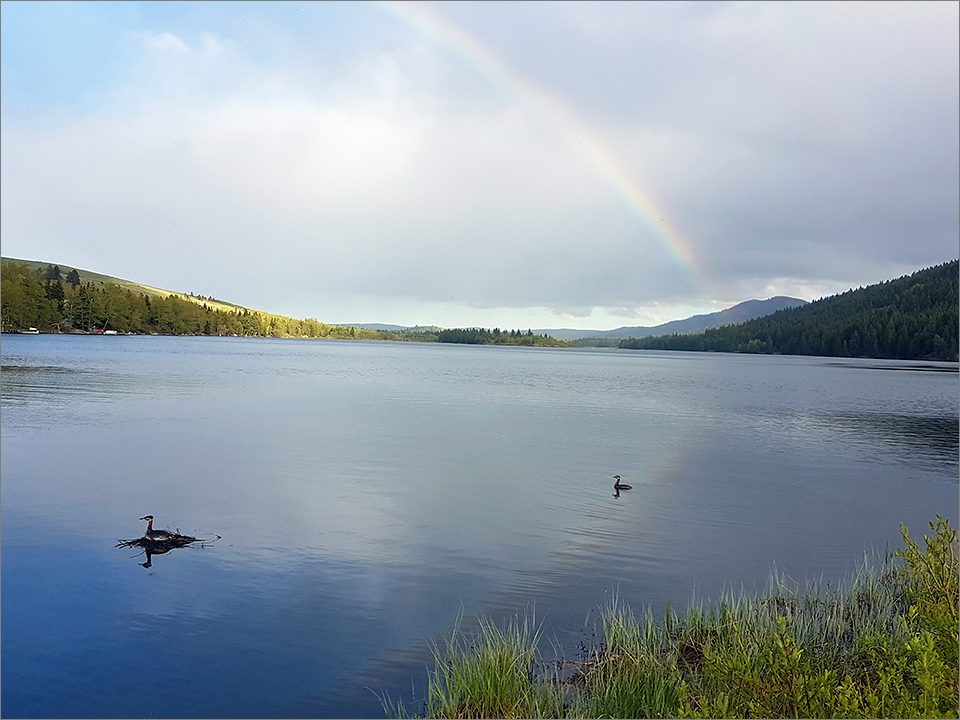
While visiting Beauvais Lake Provincial Park in late May, I watched a pair of red-necked grebes as they constructed a nest of twigs and aquatic vegetation in shallow water, along the western edge of the lake. It took the birds about a week to complete their nest. Over the next three weeks, I returned more than a half dozen times to photograph the grebes as they incubated their eggs.
The first egg was laid on May 30 or 31. Within a week, the nest was filled with four more eggs, for a total of five. Unlike another pair of grebes, whose nest was located in a nearby patch of cattails, sheltered from wind and waves, this pair had built their nest in the open, in about 2 feet of water.
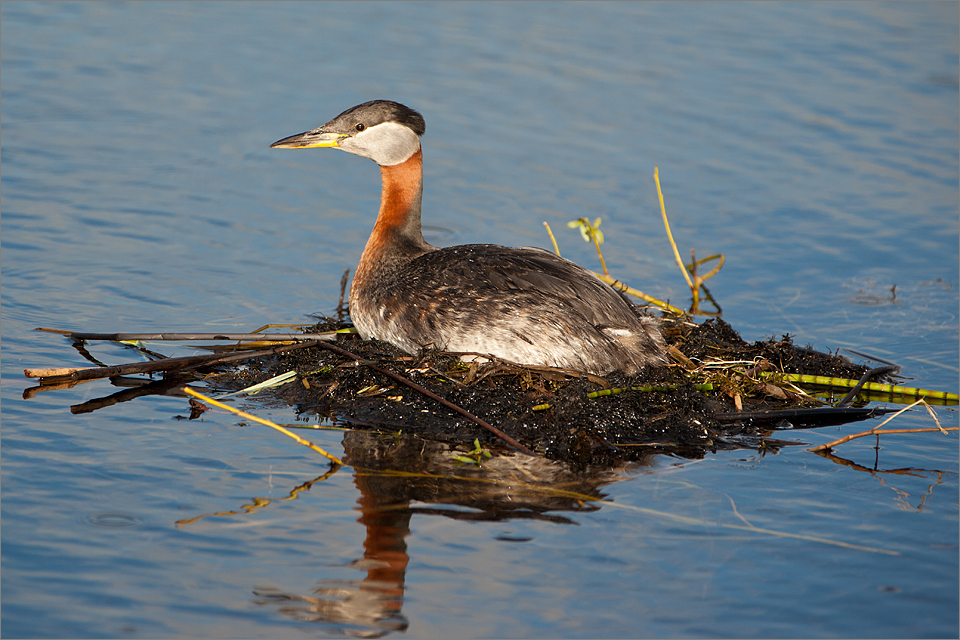
The gravel road leading to the Beaver Creek Day Use Area passed within 30 feet of the nest, making it easy to pull up alongside the lake to take pictures while remaining inside my pickup. I was at the lake mainly during the evenings, when the light was best for taking photos.
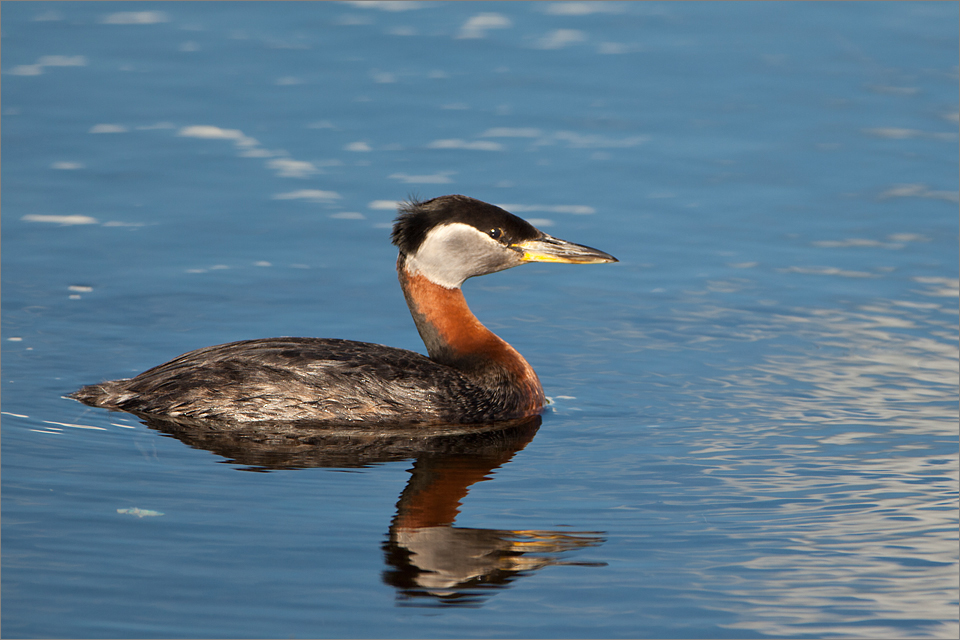
Nest Duty
Incubation and nest maintenance was shared by the grebes. There was usually at least one change of nesting duties while I was at the lake, where one of the birds would relieve the other incubating the eggs. Great photo ops were presented each time the birds swapped positions.
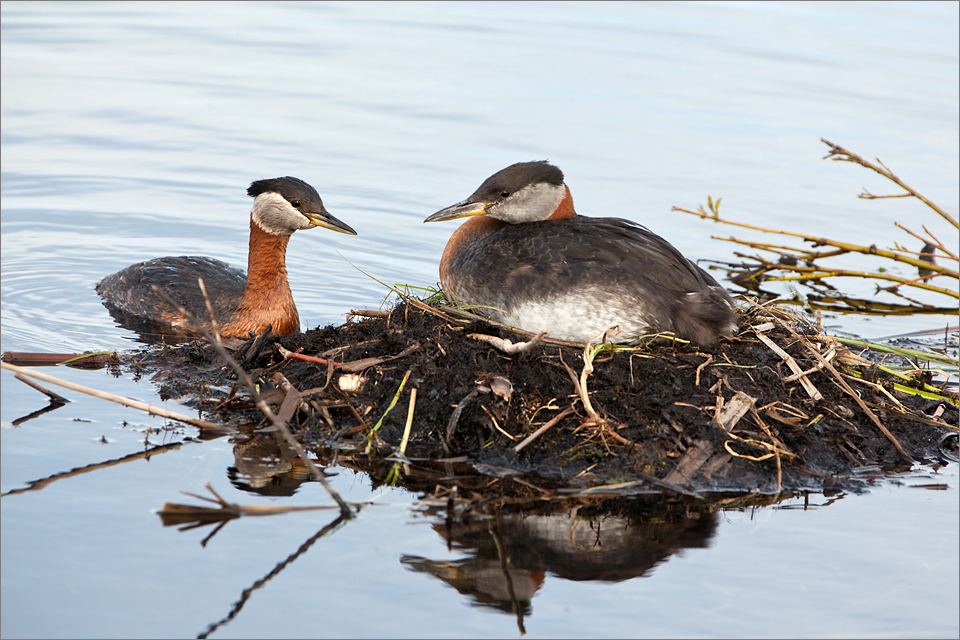
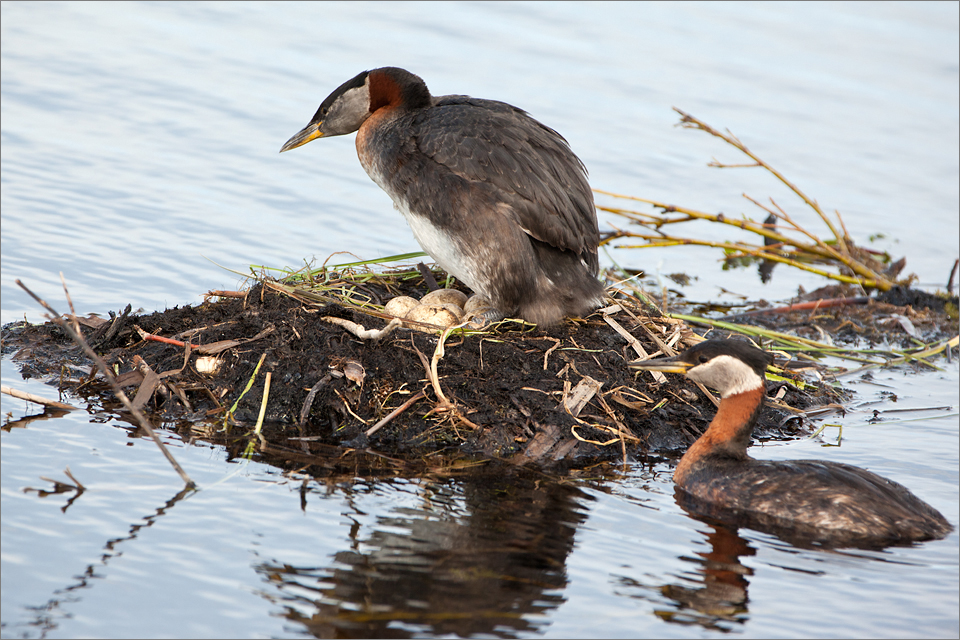
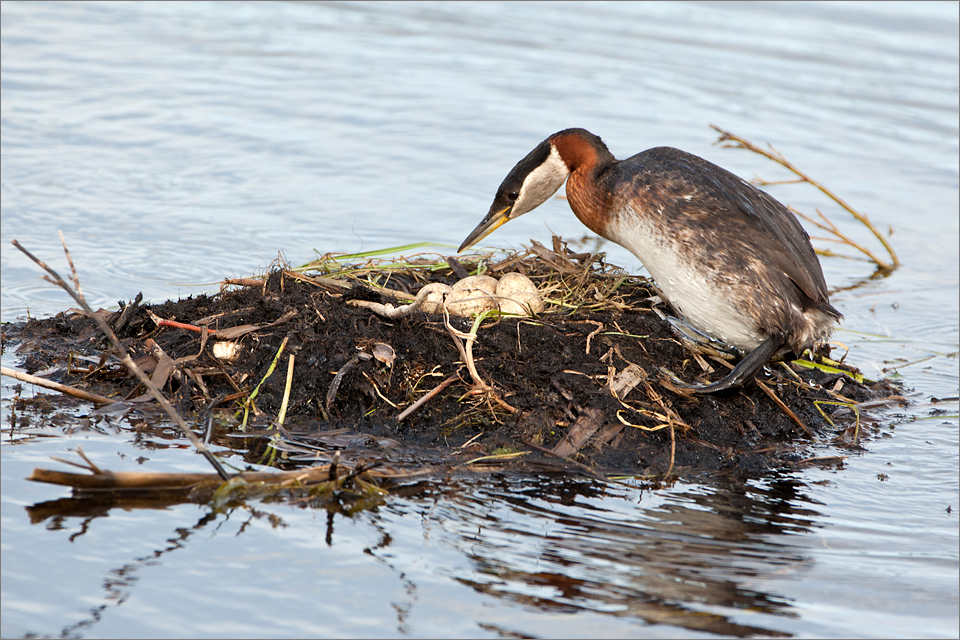
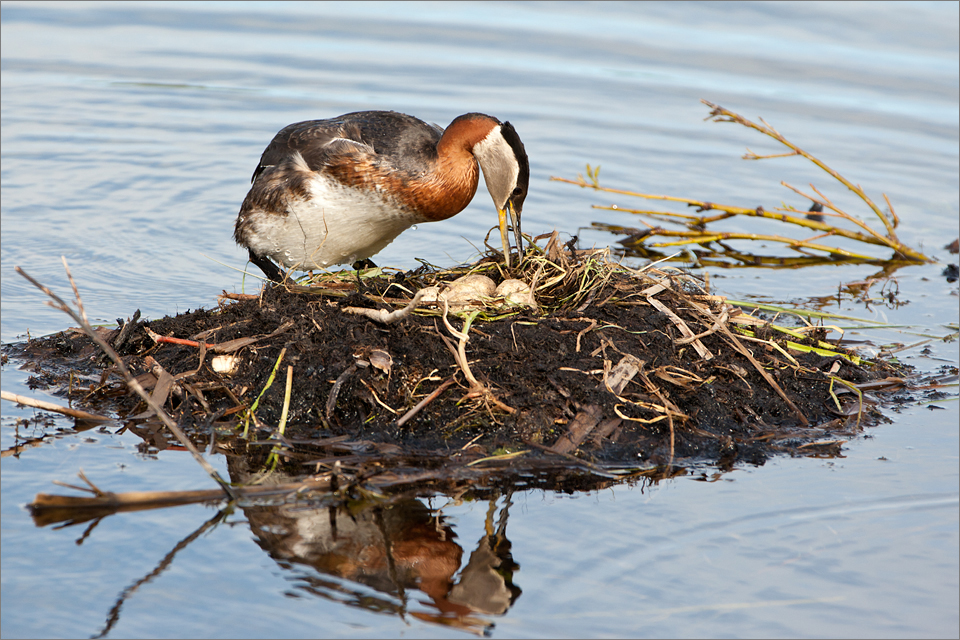
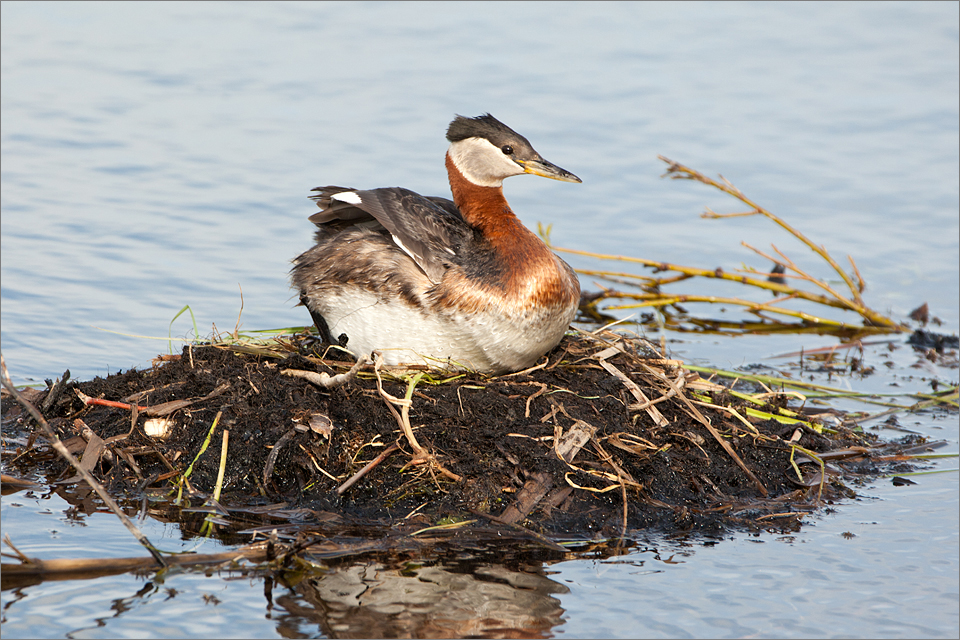
Intruders
There were several times where the neighbouring pair of red-necked grebes approached the nest occupied by the birds I was watching. This was cause for alarm and on one occasion it resulted in a fierce battle between the two pairs of grebes.
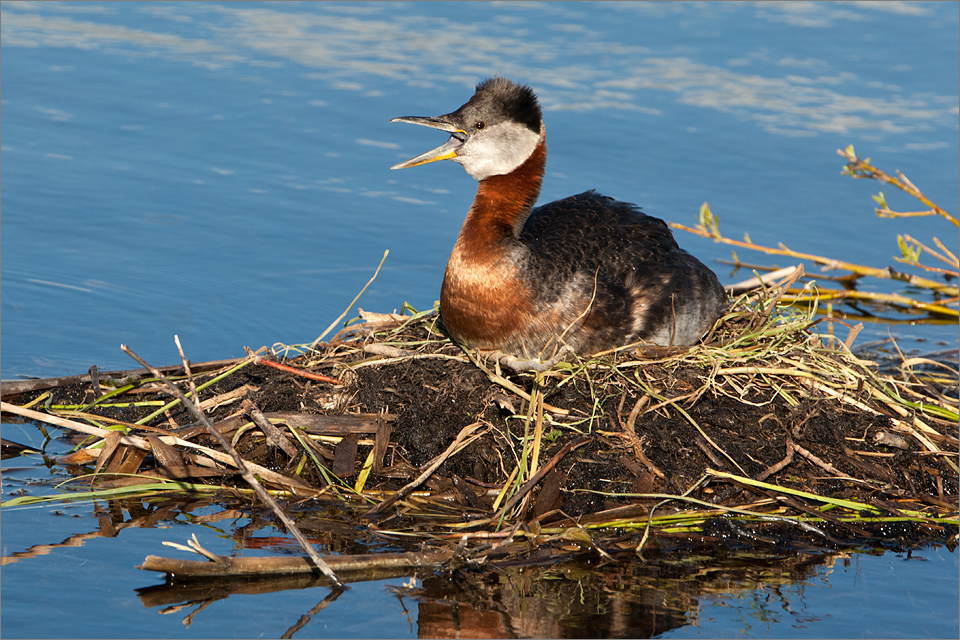
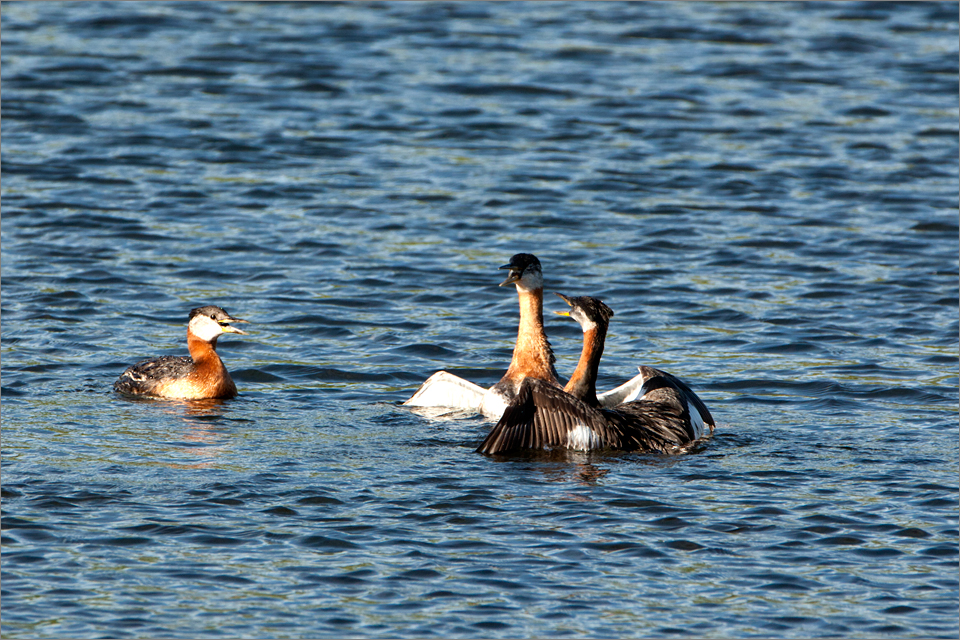
Another time, a couple of Canada geese were driven off when they ventured too close to the nest. Danger also appeared to be lurking below the water’s surface. On nearly every visit, I watched a large brown trout (likely the same fish) patrol the shallow waters around the nest.
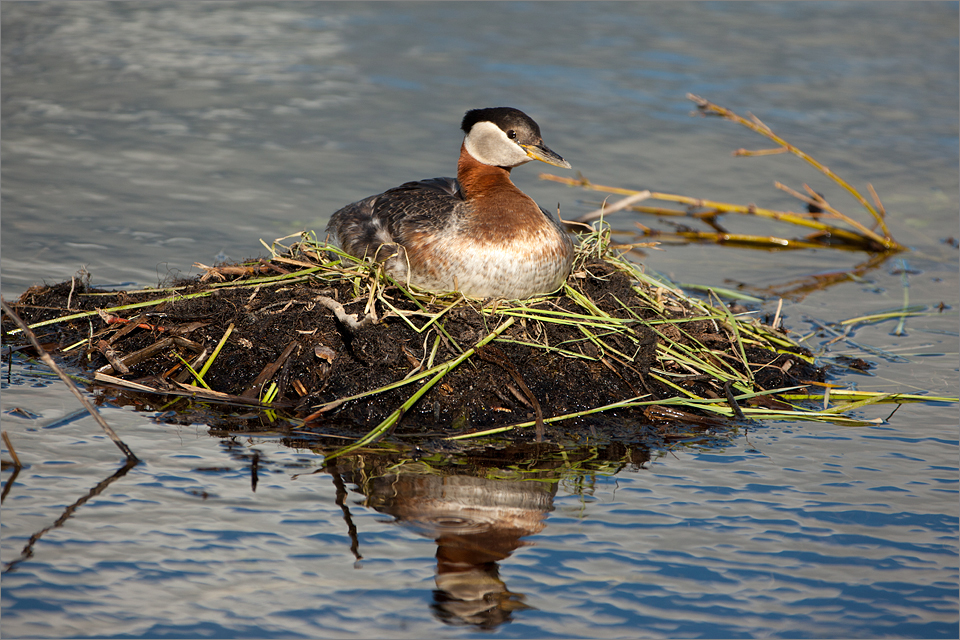
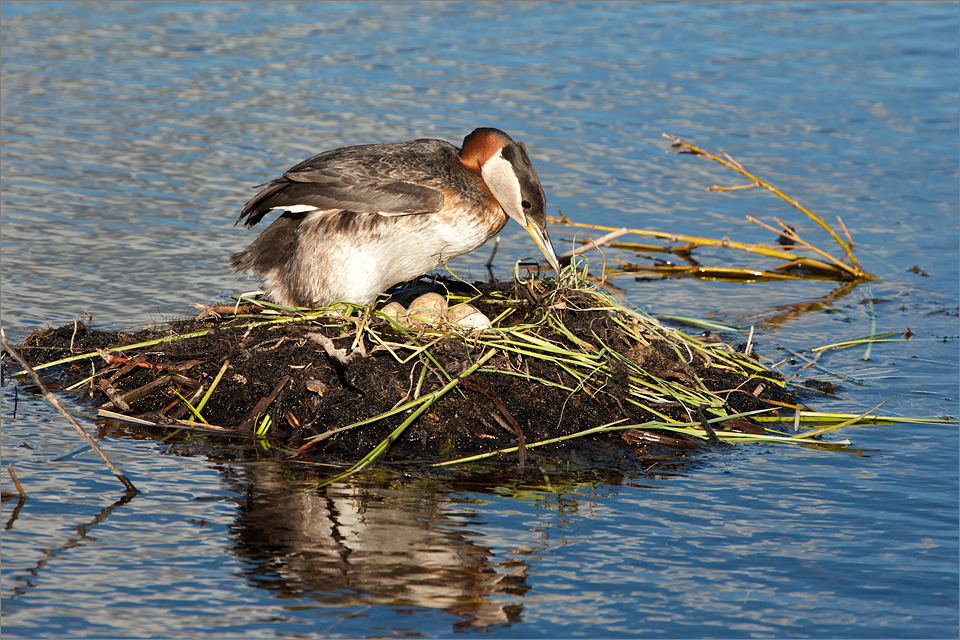
A Hatchling
The first egg hatched on June 25. When I arrived at 7:00 pm., a hatchling could be seen on the rim of the nest, next to the adult. The chick couldn’t have been more than an hour or two old. A few minutes later, the other adult climbed onto the nest to relieve its mate. When the nesting bird stood up, I could see the four other eggs had not yet hatched. I photographed the adults and their lone hatchling and planned to come back the next day.
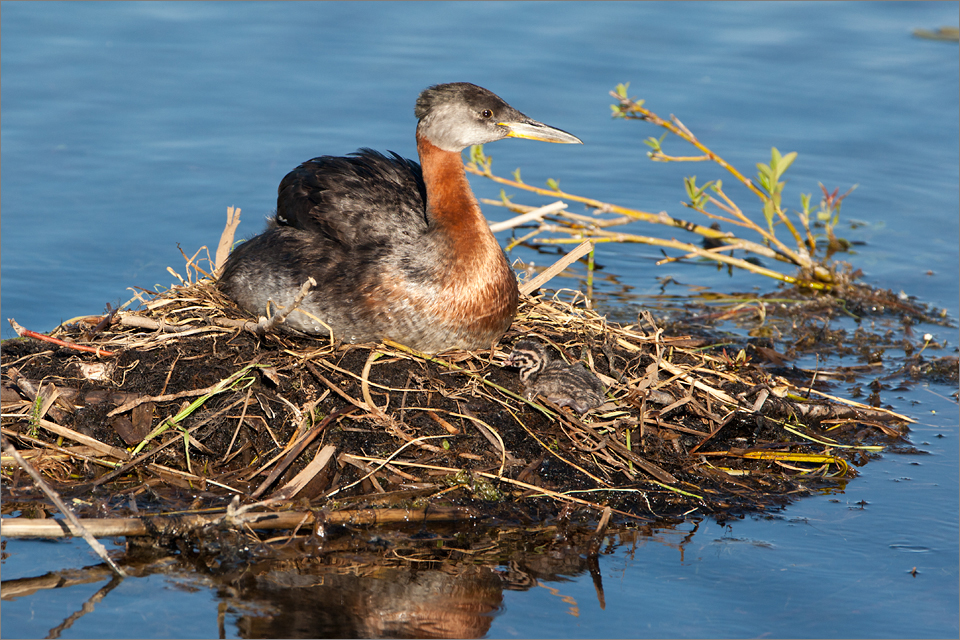
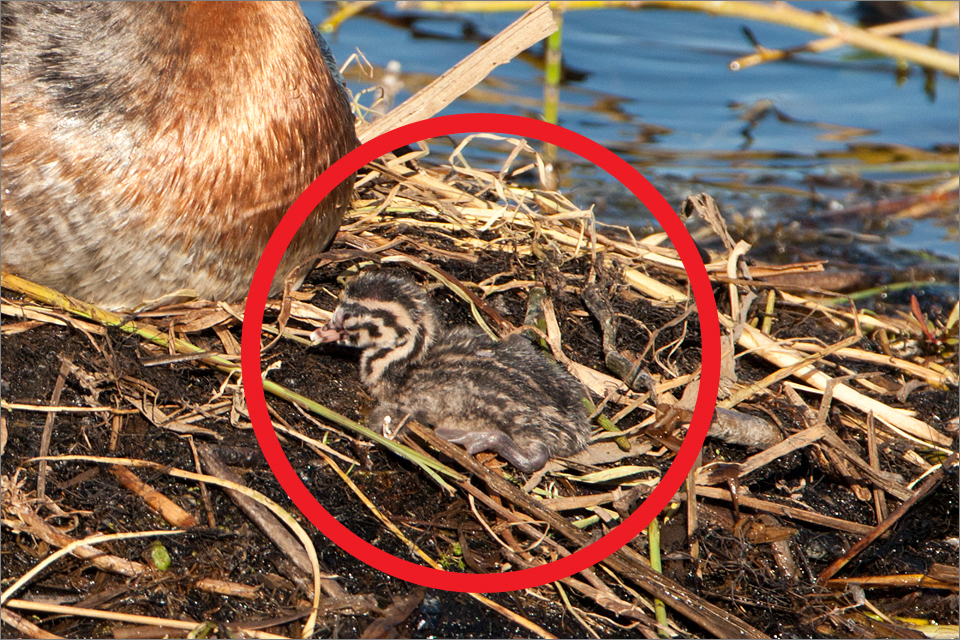
Tragedy Strikes
I returned the following evening, in anticipation of seeing more chicks. I was hoping to photograph the adults in the water, carrying chicks on their backs, a common practice with red-necked grebes while brooding their young.
As I approached the lake in my pickup, I sensed something was wrong. What I saw next was disturbing and disheartening. The nest was empty, with not a single chick or egg to be seen. The adults were in the water near the nest, paddling and drifting back and forth, aimlessly. Their bills were tucked into their breasts. They looked exhausted. It was sad to watch. All their hard work over the past four weeks had been for naught. I was baffled. The grebes were so close to having their chicks hatch successfully. What could have happened?
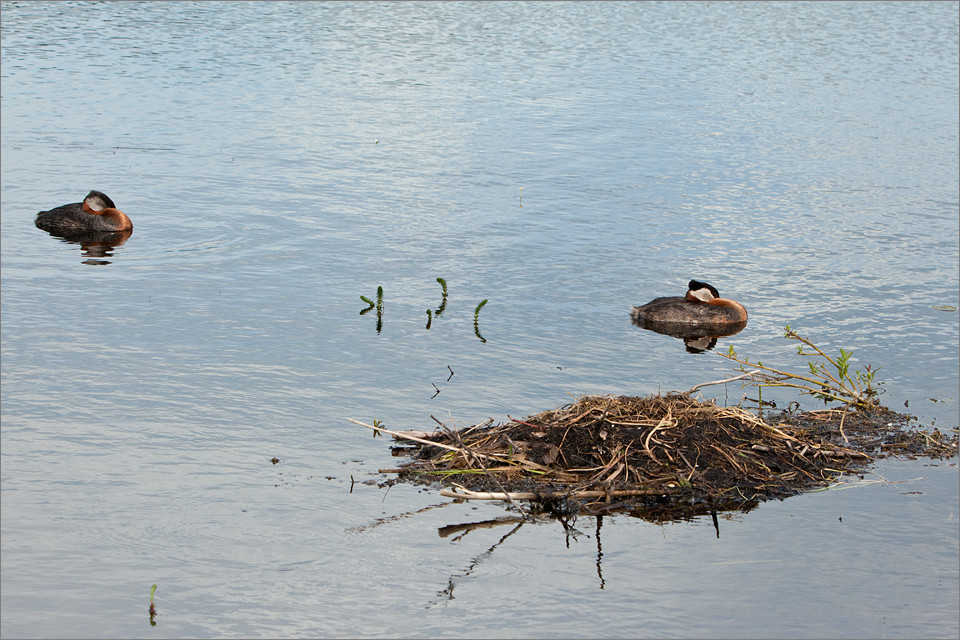
The nest was intact and showed no sign of damage. It was still lined with dry vegetation the adults collected a few days prior, in preparation of the chicks hatching. Could a fox have been the culprit? On three occasions, while I was visiting the grebes, a red fox trotted by my pickup, parked on the side of the road. The grebe’s nest was less than 20 feet from shore and in shallow water, making it an easy target. Could a mink have been responsible?
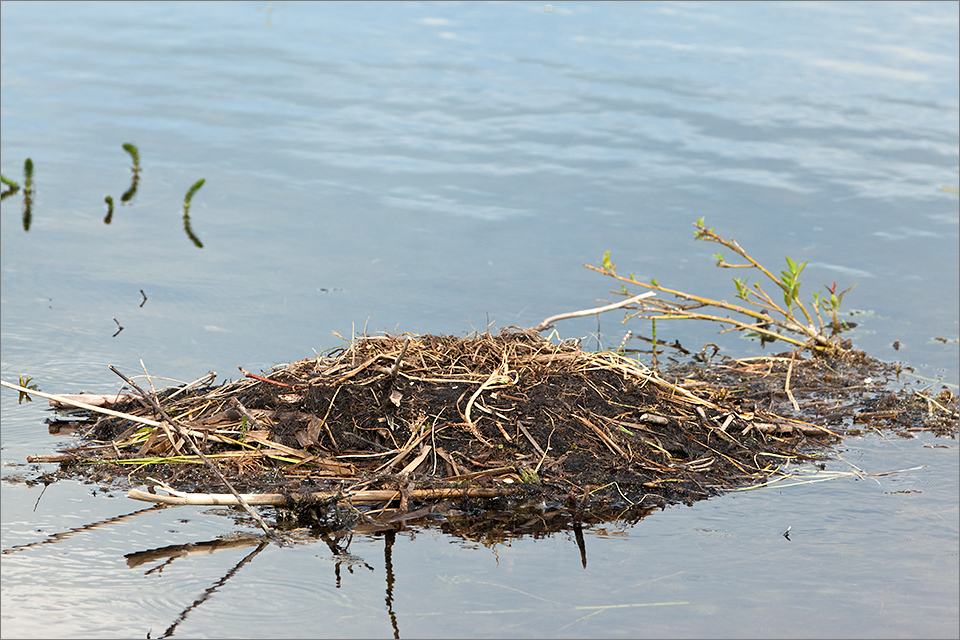
I checked the shoreline for clues of what may have occurred. It didn’t take long before I found the remains of two grebe eggs, lying in the tall grass at the edge of the lake. Whatever it was that raided the nest came back to shore, where the eggs, and presumably the hatchling, too, were devoured.
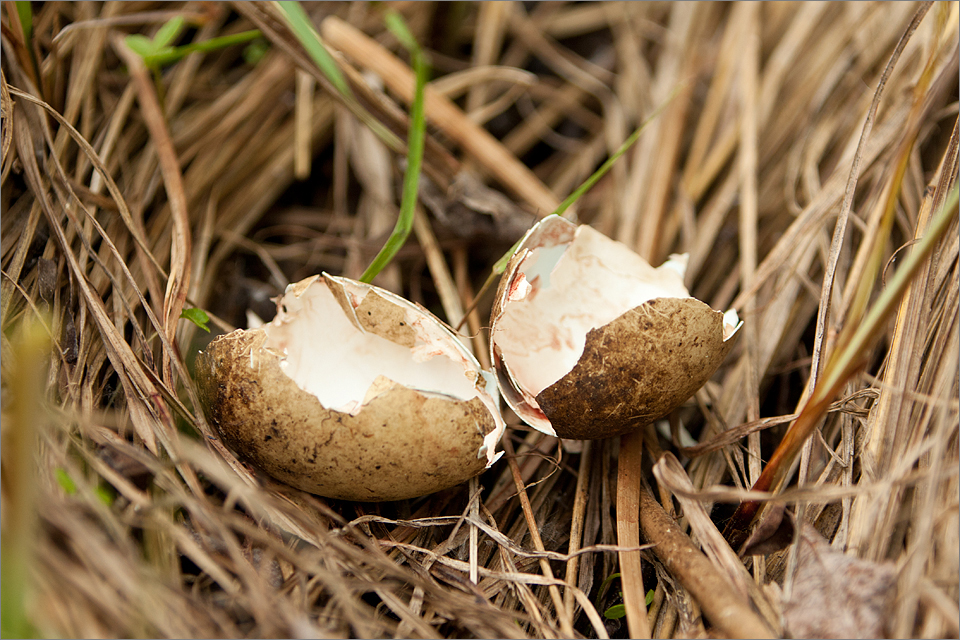
Final Thoughts
I realize these things happen all the time in nature and that it’s all part of the balance of nature. Still, it doesn’t make it any easier to understand or accept, especially when you encounter it first hand.
Over the course of a month, I watched the grebes construct and maintain their nest, and incubate their eggs until they were in the process of hatching. The birds defended their territory from intruders, endured thunderstorms, strong winds, and rough waters. To have it end like this seemed unfair.
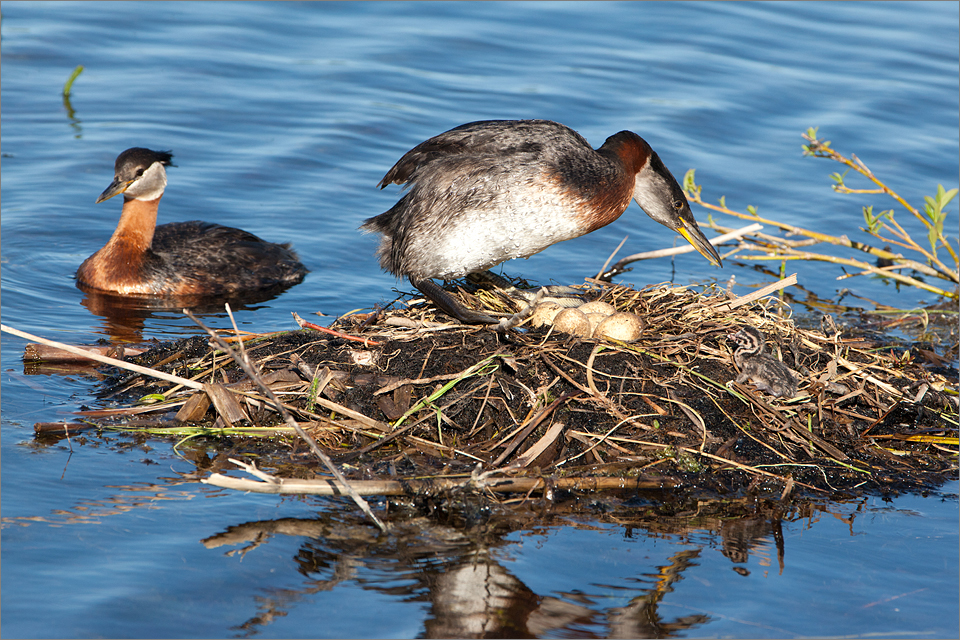
I looked forward to each of my visits to the lake. There was something new to see and learn about these birds each time. While red-necked grebes may not be considered the most beautiful or unique bird living at Beauvais Lake, I found them very interesting and enjoyed photographing them. I gained an appreciation for the time and effort it took these birds to get to the point where their hard work was starting to pay off. Along the way, I had also become attached to them.
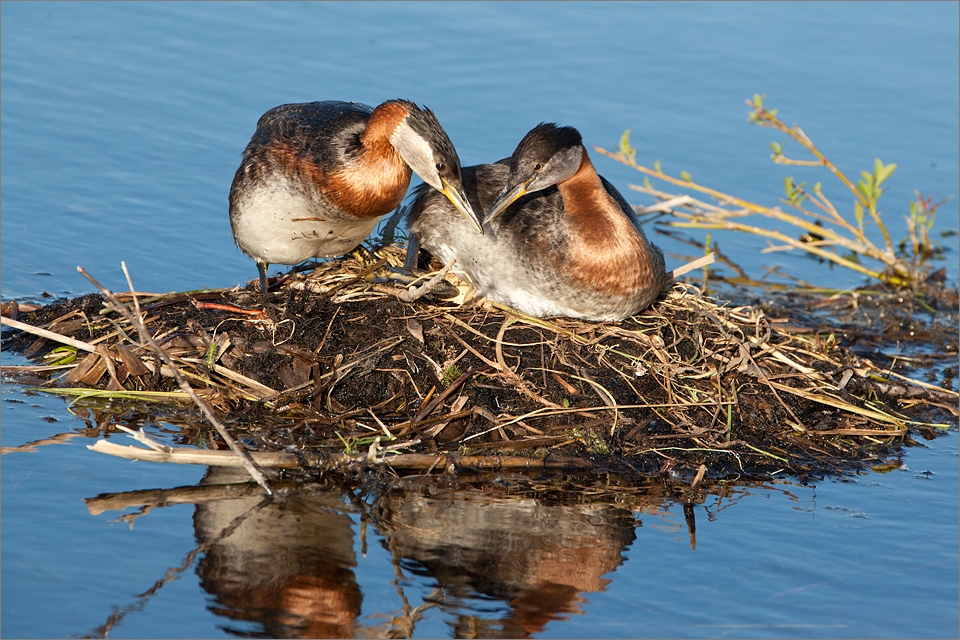
Although we do not have the happy ending I was hoping for, I’m glad I had the opportunity to observe and photograph these birds.
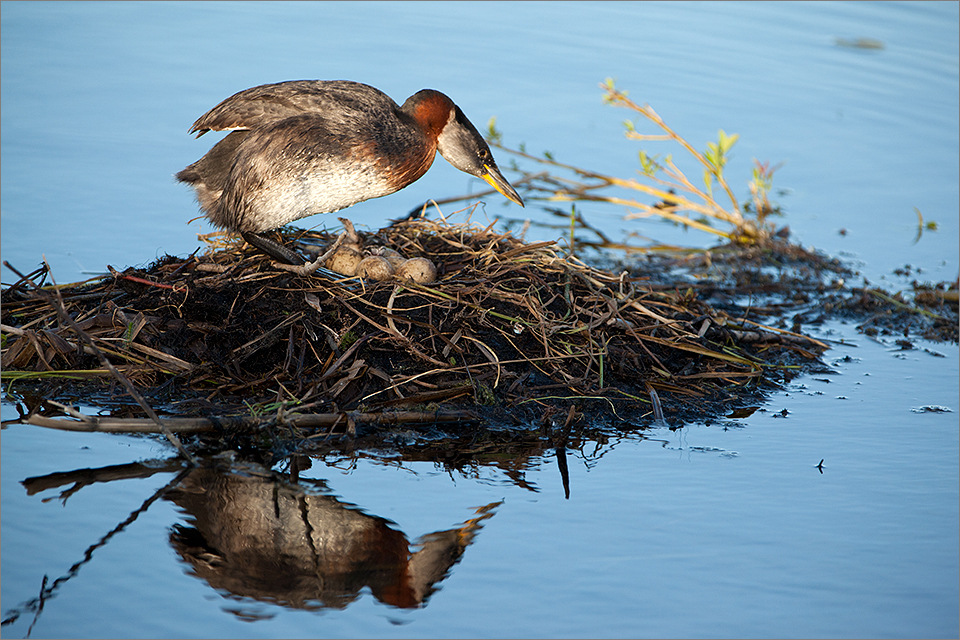
One evening while I was at the lake, a thunderstorm passed through the area. Light conditions were poor for taking photographs, so I shot some video of the grebes with my cell phone. Below is a link to this footage, posted on YouTube, where you can watch as the birds switch nesting duties. At the 00:22 second mark and again at 00:52, look for the swirl on the water’s surface next to the nest, made by a large trout.
Click here to read Beauvais Lake Birds – Part I

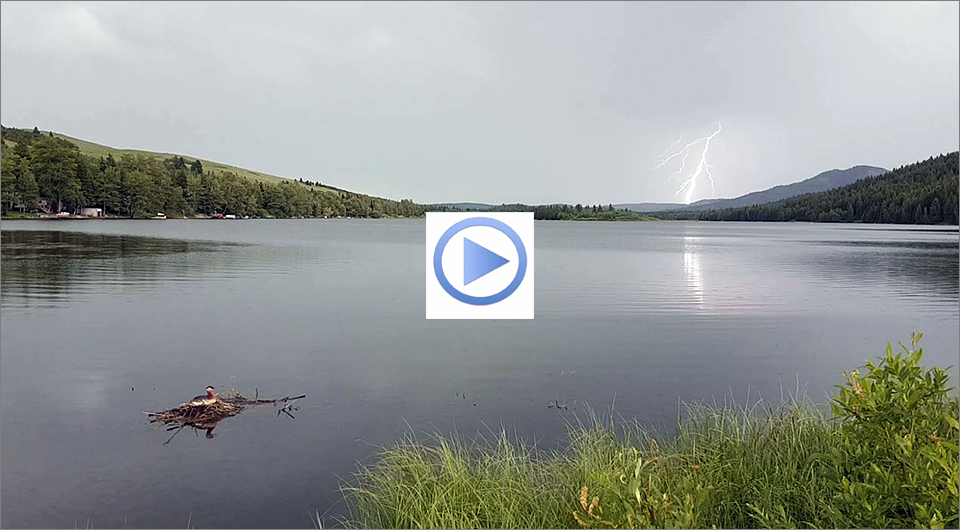
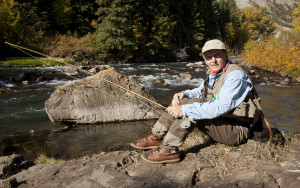
4 Comments
As always, great photos and video clip. Unfortunately, mother nature did not prevail. According to the swirl, it looks like a good sized brown. You should check it out with your fly rod.
Hi Walter,
I went back to the lake a couple of evenings ago and the brown trout was there again, feeding in the shallows. In fact, there was more than one fish. I just might have to go back with my fly rod. Thanks for commenting!
Vic :
Ah, great photos in both these posts. Too bad about the outcome. Mother Nature is not to be denied. Ever.
A local aside from our part of the more urban world. Someone, it seemed, had been killing house cats, in various parts of town. As many as 7 or 8 remains were found, mutilated, the finders said. Made the paper, more than once. Cruel, vicious, cat psychopath, they said. Maybe. A $4,000 reward was raised. Went on over several weeks. Then, investigating local police decided to send a couple of sample kitty corpses to the Animal Vet & amp; Research operation at Washington State University down in Pullman.
The menace has been unmasked. Coyote … or, more probably, coyotes. Washington State law is not specific about how many years a coyote can get for that.
Oh, the video …. trout feeding on damsel nymphs? Too early up there for that?
Stay well. Be watchful for marauding minks, foxes & coyotes. Not to mention grizzlies.
Oh, and people of certain persuasions, as well :-))
Hi Terry,
Glad you liked the photos. It was too bad about the outcome. I’m guessing it was probably a mink that was responsible. A friend mentioned he had seen one earlier, working the shoreline, not too far from the nest I was watching.
That’s interesting about the coyotes killing cats. Sometimes, we get big cats (cougars) that come into town to get pet dogs and mule deer. We have had grizzlies in town before. It’s always exciting when that happens. The trout in the video could have been eating damsels, as they are hatching on the lakes right now. The brown trout that was hanging around the grebe’s nest was well over 20 inches. I saw it quite a few times. Had I not been photographing, I would have made a few casts with my fly rod. Maybe I’ll go back and try to catch the trout!
Hope you say well and safe, too! Thanks for checking in.